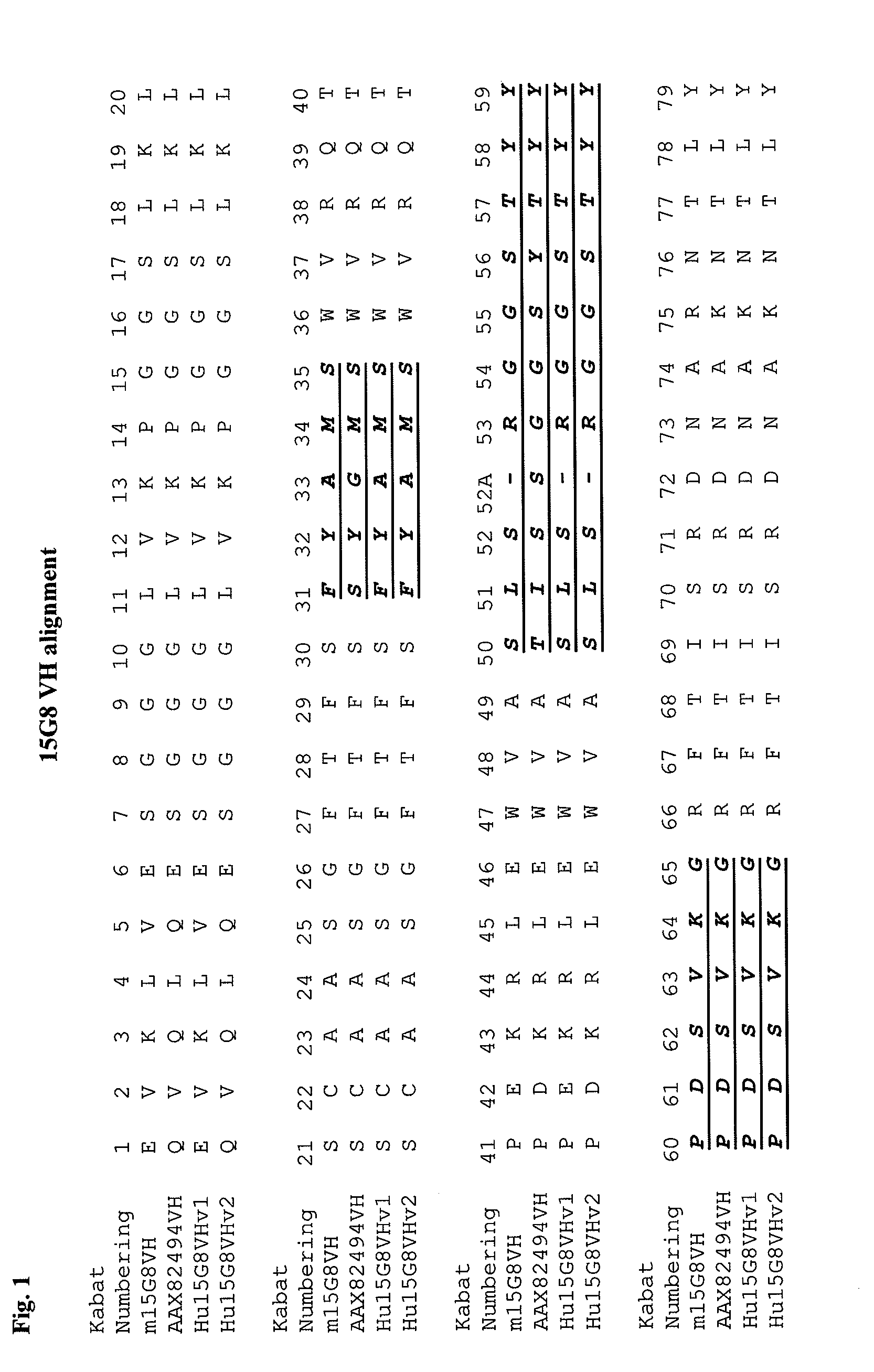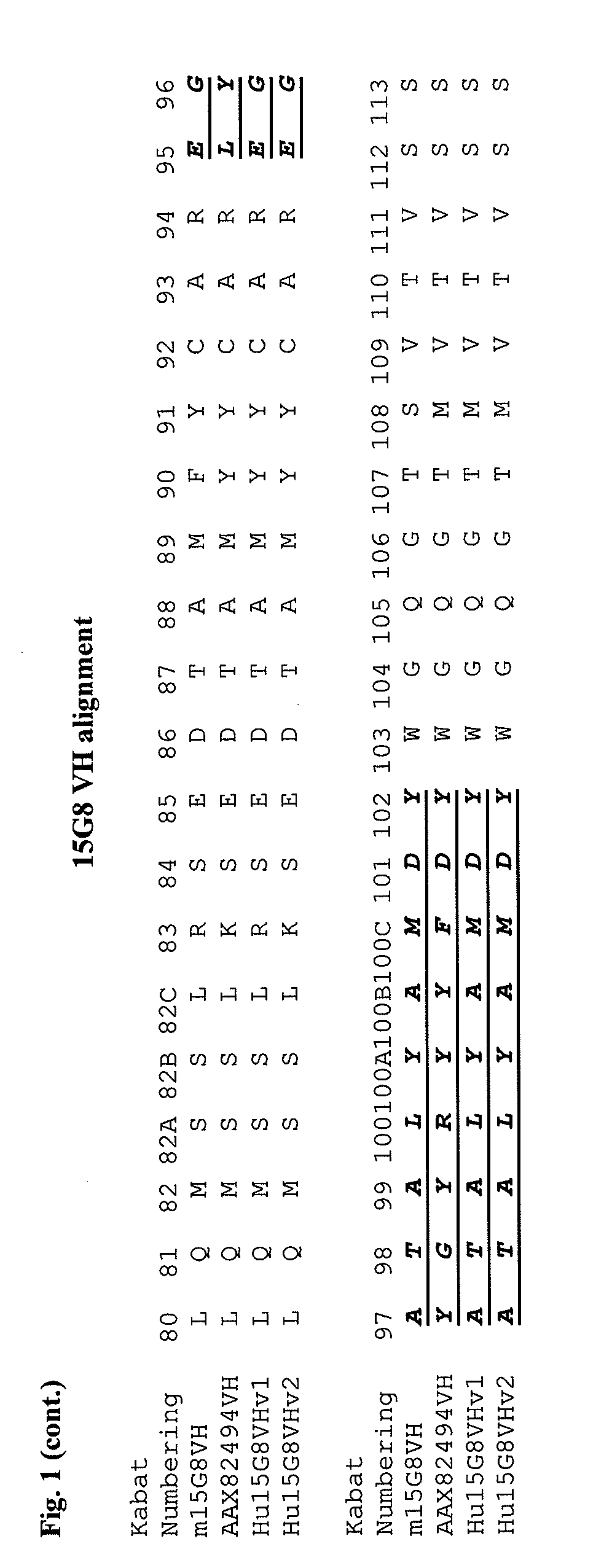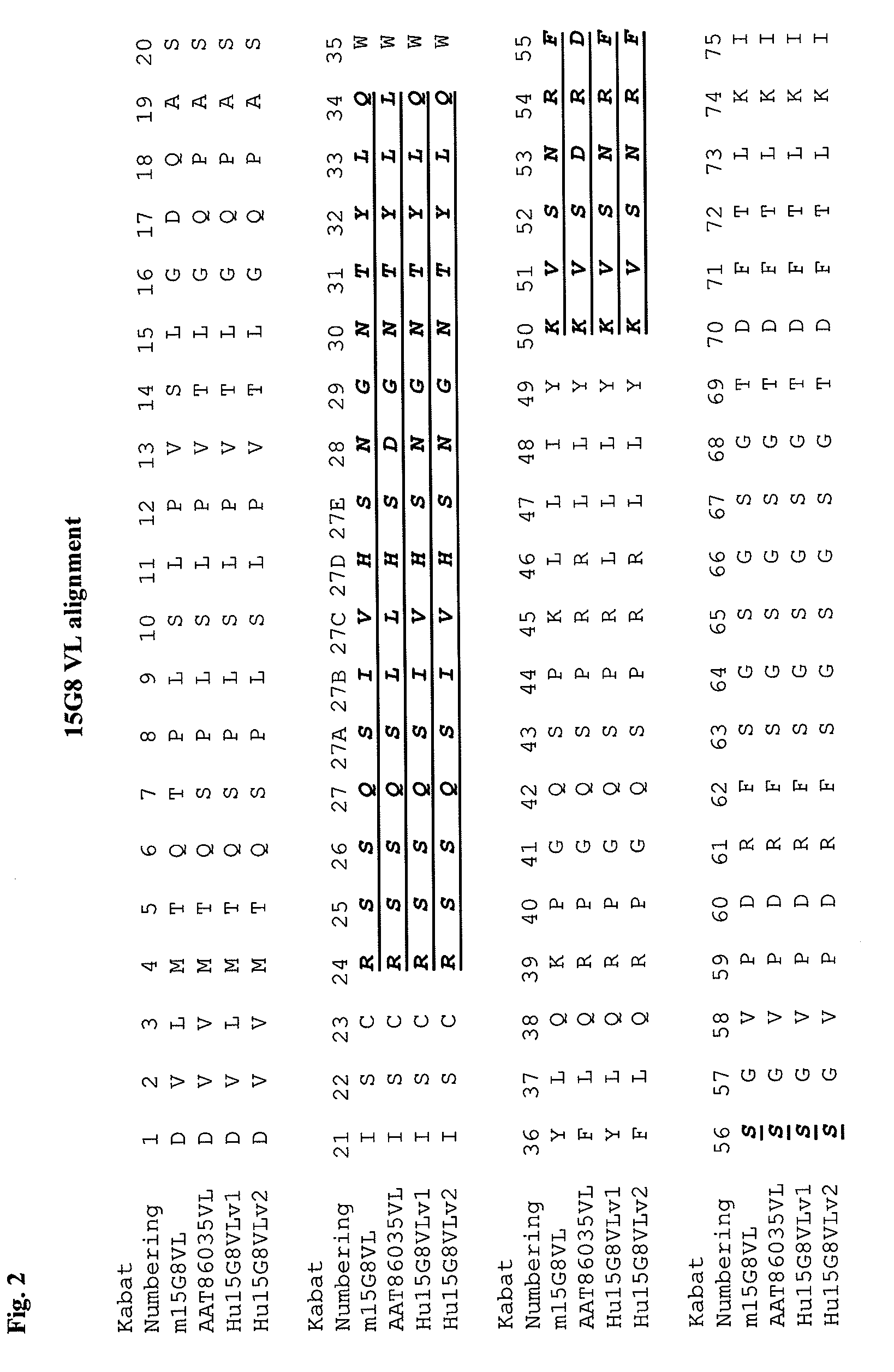Apoe immunotherapy
a technology of immunotherapy and immunoglobulin, applied in the field of immunoglobulin, can solve the problems of overarch structural differences in all three isoforms, and achieve the effects of treating or effecting the prophylaxis of neurological diseases
- Summary
- Abstract
- Description
- Claims
- Application Information
AI Technical Summary
Benefits of technology
Problems solved by technology
Method used
Image
Examples
example 1
Antibody Preparation
[0175]To prepare antibodies specific for the neo-epitope of ApoE ending at 272 CGG-LVEDM (SEQ ID NO:5); ApoE 268-272 (LVEDM; SEQ ID NO:41) with an artificial CGG added as linker and for ease of coupling) was conjugated to Sheep anti Mouse IgG(H+L) using EMCS ([N-e-Maleimidocaproyloxy]succinimide ester) which allows the cross-linking of the free amines on the sheep anti mouse to the cysteine on the peptide.
[0176]Five A / J mice were immunized on day 0 with 100 μg of the peptide conjugate in Freund's Complete Adjuvant, and again on day 14, 28 and 56 with 100 μg of peptide in Freund's Incomplete Adjuvant. On day 63 mice were bled via a tail vein nick and dilutions of serum were then used to determine antibody titers to the CGG-LVEDM peptide (SEQ ID NO:5). All animals raised an acceptable titer.
[0177]Animal #5 had a titer of 218000 and was chosen for fusion. Fusion was done using a modification of the method of Kohler and Milstein. Fused cells were incubated overnight ...
example 2
In Vitro Testing of Antibodies
[0180]Neuro 2A cells (mouse neuroblast from neuroblastoma, ATCC; Cat. No. CCL-131) expressing transfected human ApoE4 process it to the 1-272 fragment which exerts neurotoxicity at a number of levels (as detected by a simple 3-(4,5-demithylthiazol-2-yl)-2,5-diphenyltrazolium bromide (MTT) assay for instance (see Chang et al., PNAS 102, 18694-18699 (2005)). MTT is a yellow tetrazolium salt reduced in metabolically active cells to form insoluble purple formazan crystals, which are solubilized by the addition of a detergent. The color can then be quantified by spectrophotometric means. These cells can be used to determine whether ApoE(1-272)-specific anti-Apo E antibodies block the toxicity of the fragment in this neuronal cell line. Antibody uptake if needed can occur by a mechanism such as micropinocytosis or pinocytosis. A read-through antibody (i.e., antibody with an epitope bridging the site of truncation) can be used as a negative control. A positive...
example 3
In Vivo Testing of Antibodies
[0182]Antibodies preferentially binding to ApoE(1-272) over ApoE(1-299) or agents inducing such antibodies can be administered to human ApoE4 containing mice on an APP transgenic background. Holtzman et al., PNAS 2000 vol. 97 no. 6 2892-2897 described an example of such mice in which mice having a knocked out endogenous Apo alleles are transfected with human APP V717F and human ApoE4. Immunohistological staining of the transgenic mouse brain and western blots of these mice show increased levels of ApoE(1-272) fragment in the absence of such treatment and leads to behavioral deficits in the mice. Reduced levels of ApoE (1-272), increased synapotophysin levels, or inhibition of behavioral deficits can therefore be used as efficacy endpoints.
PUM
| Property | Measurement | Unit |
|---|---|---|
| Fraction | aaaaa | aaaaa |
| Fraction | aaaaa | aaaaa |
| Fraction | aaaaa | aaaaa |
Abstract
Description
Claims
Application Information
 Login to View More
Login to View More - R&D
- Intellectual Property
- Life Sciences
- Materials
- Tech Scout
- Unparalleled Data Quality
- Higher Quality Content
- 60% Fewer Hallucinations
Browse by: Latest US Patents, China's latest patents, Technical Efficacy Thesaurus, Application Domain, Technology Topic, Popular Technical Reports.
© 2025 PatSnap. All rights reserved.Legal|Privacy policy|Modern Slavery Act Transparency Statement|Sitemap|About US| Contact US: help@patsnap.com



